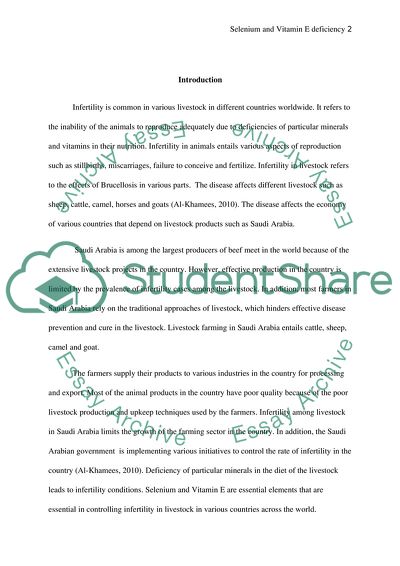Cite this document
(Selenium and Vitamin E Deficiency Assignment Example | Topics and Well Written Essays - 2750 words, n.d.)
Selenium and Vitamin E Deficiency Assignment Example | Topics and Well Written Essays - 2750 words. Retrieved from https://studentshare.org/health-sciences-medicine/1680130-selenium-and-vitamin-e-deficiency-as-risk-factors-for-animals-infertility-epidemiological-evaluation
Selenium and Vitamin E Deficiency Assignment Example | Topics and Well Written Essays - 2750 words. Retrieved from https://studentshare.org/health-sciences-medicine/1680130-selenium-and-vitamin-e-deficiency-as-risk-factors-for-animals-infertility-epidemiological-evaluation
(Selenium and Vitamin E Deficiency Assignment Example | Topics and Well Written Essays - 2750 Words)
Selenium and Vitamin E Deficiency Assignment Example | Topics and Well Written Essays - 2750 Words. https://studentshare.org/health-sciences-medicine/1680130-selenium-and-vitamin-e-deficiency-as-risk-factors-for-animals-infertility-epidemiological-evaluation.
Selenium and Vitamin E Deficiency Assignment Example | Topics and Well Written Essays - 2750 Words. https://studentshare.org/health-sciences-medicine/1680130-selenium-and-vitamin-e-deficiency-as-risk-factors-for-animals-infertility-epidemiological-evaluation.
“Selenium and Vitamin E Deficiency Assignment Example | Topics and Well Written Essays - 2750 Words”, n.d. https://studentshare.org/health-sciences-medicine/1680130-selenium-and-vitamin-e-deficiency-as-risk-factors-for-animals-infertility-epidemiological-evaluation.


